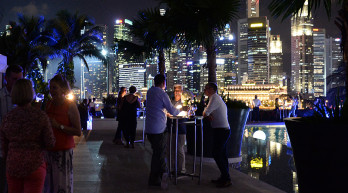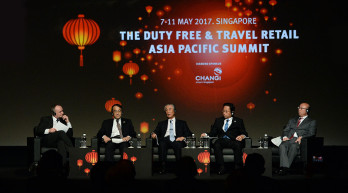

Opening this year’s TFWA Asia Pacific Exhibition & Conference, TFWA president Erik JuulMortensen welcomed the modest growth seen in the travel retail sector this year, but stated that business remains fragile.
The theme ‘Re-igniting our industry’ reflected, he stated, how the industry builds excitement and engagement around the duty free and travel retail offer, both here in Asia and globally.
Across the world, the last 12 months have seen profound and sometimes unexpected changes, with underlying unrest over globalisation giving rise to populist and protectionist responses, and these have had implications for the industry.
2016 saw the continuation of a number of trends already visible over the previous year. According to the latest duty free and travel retail sales figures from Generation Research, the industry in Asia Pacific performed well and continued to lead the world.
Preliminary figures for 2016 show that global duty free and travel retail sales were just over US$63.5 billion; a modest 2.5% increase over 2015. Yet again, the powerhouse that pulled the industry away from negative growth was the Asia Pacific region which delivered sales of just over US$27.5 billion, an impressive 9.1% year on year increase. This is over three times the rate of global growth.
The best performing category was, as in 2015, fragrances and cosmetics which achieved global growth of 8.4%. There was also a creditable performance in the liquor, tobacco and fashion categories, although the market for watches and jewellery remains challenging. The influence of the beauty category was even more significant in the Asia Pacific region where the category grew year on year by a huge 20.7%.
In terms of sales by channel, airports continue to increase their share of sales within the region but other shops, effectively the duty and tax free downtown malls and shopping centres, delivered the strongest performance in terms of year on year growth. The outlook for the inflight market, however, is less positive.
Our potential customer base continues to grow. ACI (Airports Council International) short and medium-term passenger growth forecasts show this region leading the world in terms of year on year growth in air passenger numbers, with a 37.8% share of all passengers by 2020. The IMF is similarly upbeat with regards to the wider prospects of the region, and recently revised its global economic forecast upwards.
However there are reasons to be cautious. The world has undergone some profound changes in the past 12 months. The long-term implications of the UK’s decision to leave the EU are not clear, while in Asia, the complex situation in Korea, such a driving force for the industry in the region, is a concern.
For all its advantages and attractions, Asia Pacific is not a simple place to do business and if we are to do justice to the undoubted potential that exists here, our industry must be ready to respond to change, shape it and move forward.
Agility is required if the industry is to flourish and the sector’s offer needs to be as unique as the customers it serves. Today’s customer is looking for something engaging, ultra-exclusive and personalised if possible, backed up by the credibility that strong brands provide.
The sector also needs to be openly innovative. The industry is starting to successfully combine physical and digital retail in a way that makes shopping an easy, convenient and engaging part of the traveller’s journey. In addition, the availability of ‘big data’ facilitates a tailored approach and allows it to be more agile in responding to opportunities and trends.
But, there is still a way to go and making better use of data takes time and investment.
There is also still a frustrating unwillingness to pool data to achieve the level of customer insight that is common in the domestic market and the industry needs to look at whether a data-sharing model would work for the business. If the concessions-based model is the stumbling block, continued Juul-Mortensen, perhaps it is time that duty free and travel retail looked at that too.
Agility also means communicating more effectively. The sector needs to deliver clearer, more compelling messages about the merits of shopping in duty free and travel retail. This, said Juul-Mortensen, needs to be done by the industry as a whole and not as a patchwork of individual companies.
As what is now recognised as ‘the duty free industry’ marks its 70th anniversary, TFWA is using this milestone as an opportunity to tell the wider world about what duty free and travel retail contributes to the business of travel and the benefits it brings to consumers, travel environments, local economies and governments. It will be launching a promotional campaign designed to highlight what the industry contributes.
As well as agile, the industry must also be resolute. Despite the growth, these are challenging times for the sector in Asia Pacific and the wider world. The combination of geopolitical, economic and social tensions is potent for an industry that depends on the freedom to travel. The pressure it faces has arguably never been greater.
The response to the challenges must be a common approach, said Juul-Mortensen. Brands, retailers and landlords will all have to make greater efforts to understand each other’s positions and concerns, and act together to create a model that works for all parties. Above all, the focus must be on re-igniting the industry by understanding the customer and delivering an exceptional shopping experience. The sector faces challenges, he concluded, and growth should not be taken as given, but the industry still has much of which it can be proud.



